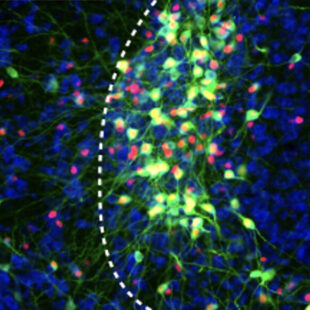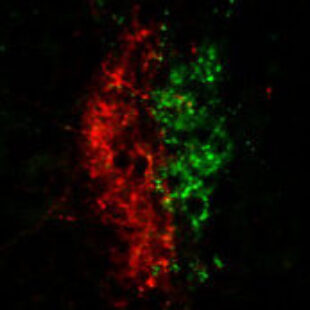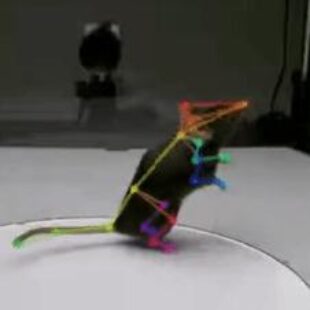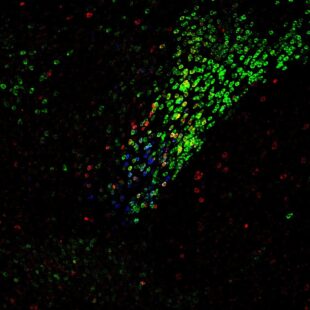Research

Pain and Anesthesia
Pain perception involves two main aspects: the type of pain being felt, and the suffering and negative emotions evoked by this pain. The Wang lab is mapping detailed connectivity of neurons linked to pain perception, recording in vivo activity using electrophysiology and imaging approaches, as well as manipulating pain-activated neurons (e.g. using activity-dependent tool called CANE) to understand both sensory and affective pain perception, and how changes in this system contribute to the suffering associated with chronic pain. It is well known that perception of pain is lost under general anesthesia. Interestingly, the Wang lab discovered a subset of central amygdala neurons that are “activated” by general anesthesia and activity of these neurons alone can potently suppress pain. The lab is further exploring the mechanisms underlying this brain’s endogenous pain suppressing system.

Active Touch
Mice use their whiskers to sense and explore the physical environment. Sensory information is first detected by trigeminal sensory neurons that innervate these whiskers and then processed by circuits in the brainstem, thalamus, and cortex. Using in vivo recording and computational modeling, the Wang lab aims to understand how this sensory system generates tactile perceptions such as the distance from, or texture and shape, of an object.

Sensorimotor Behaviors
Eating, drinking, sniffing, and moving around are natural behaviors animals and humans carry out effortlessly. These behaviors all involve cycles of sensorimotor transformations, i.e. sensation to actions to sensory feedback to subsequent actions, so on and so forth. How might multiple sensory and motor circuits across the brain work together to execute these behaviors seamless remain unknown. We use modern circuit mapping tools to dissect connectivity of neural circuits, and use 3D behavior tracking together with in vivo imaging or recordings across different brain areas to understand of the sensorimotor transformation process.

Circuits of Addiction
A new direction for our lab is the study of neural circuits involved in drug addiction. Our team has identified neurons that are either activated or suppressed by morphine. They are currently testing the hypothesis that specific groups of morphine-inhibited neurons, when re-activated, can cause animals to crave less morphine and promote non-drug-seeking activities. Once critical brain circuits and clusters of neurons involved in morphine-addiction are identified, the Wang lab will examine their connectivity, plasticity, and changes in function when influenced by morphine. Gaining a deeper understanding of how drugs of abuse affect these circuits will help pave the way for future treatments